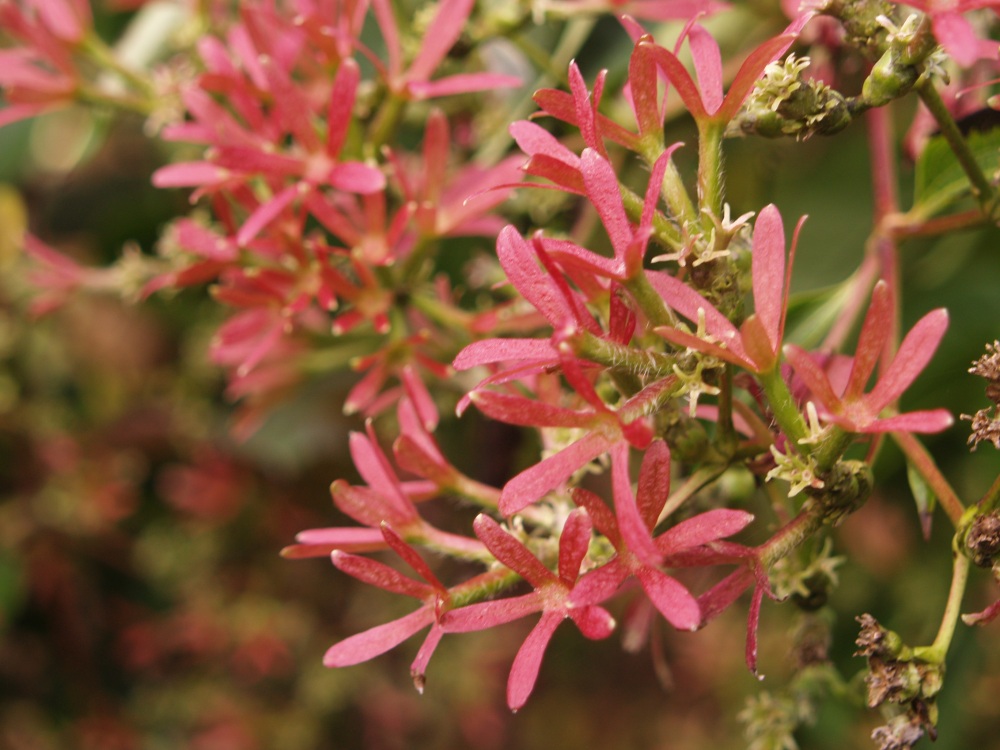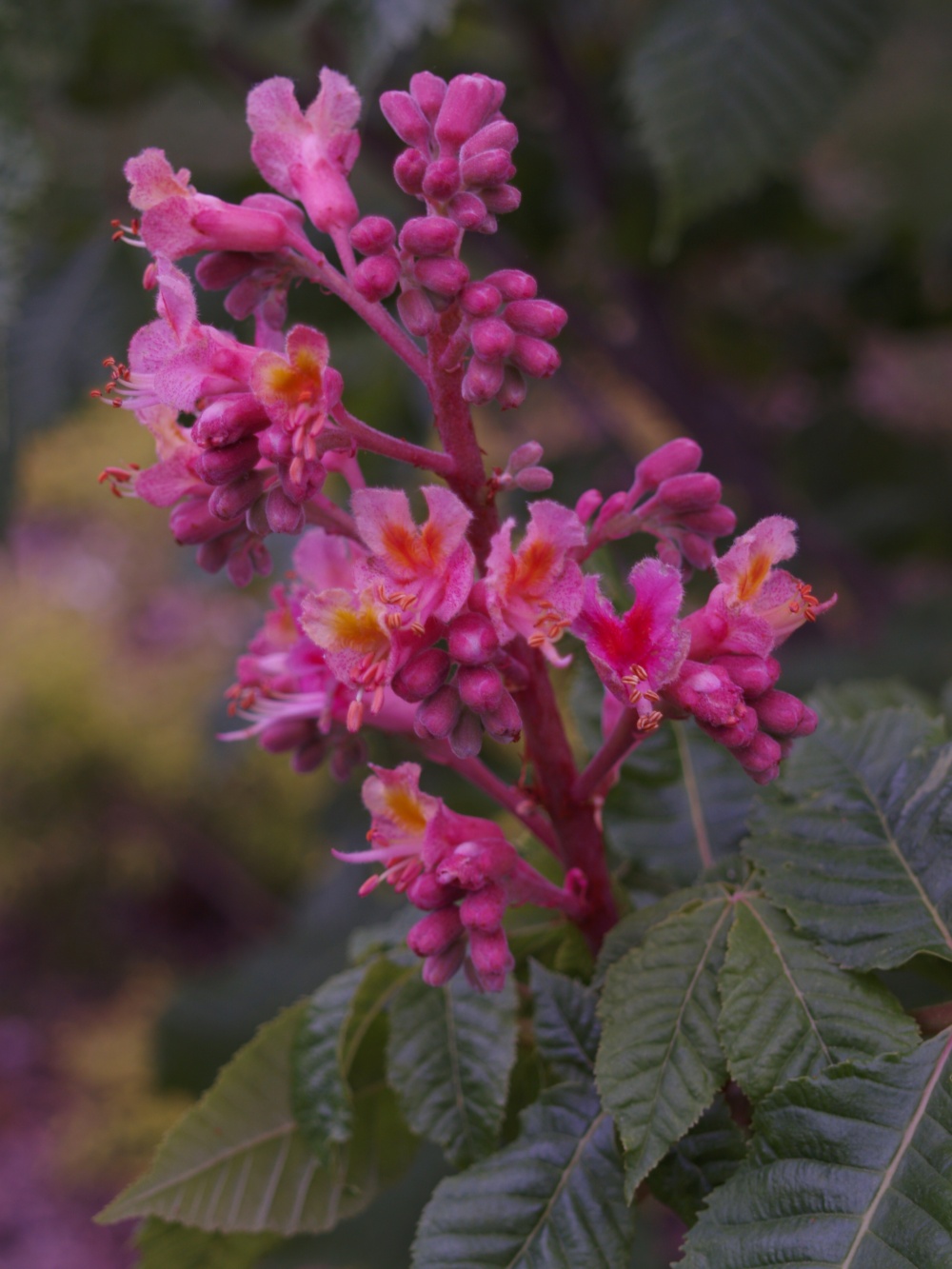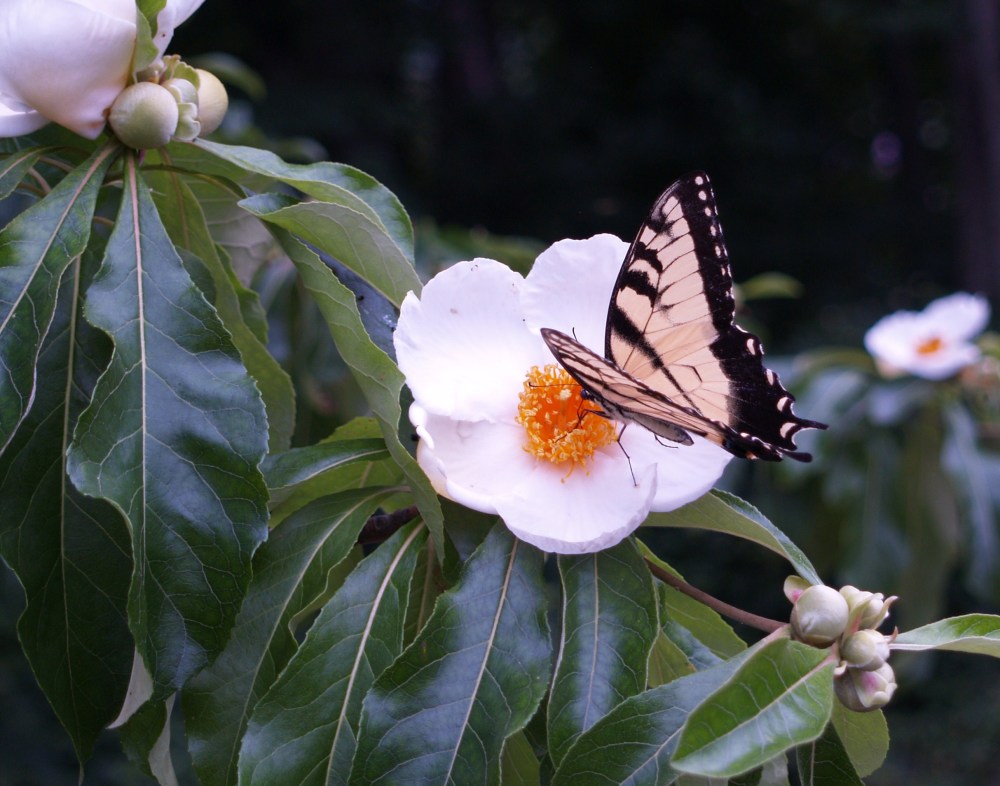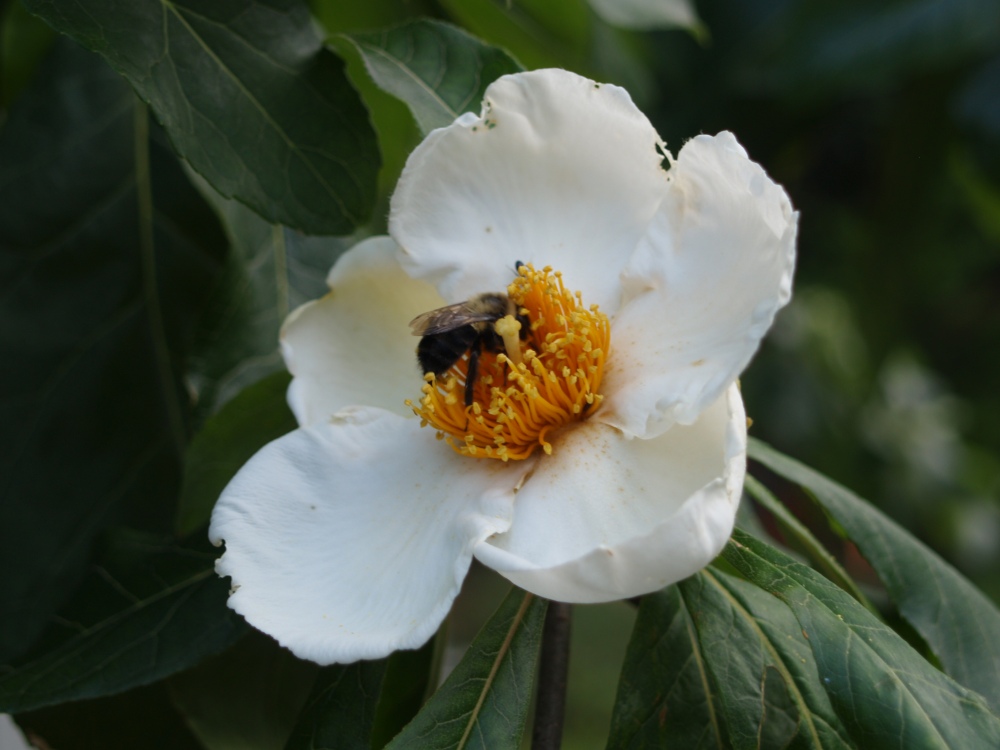A year ago the Seven Son tree (Heptacodium miconioides, below) was ripped from the ground in a violent summer storm. Unfortunately, it was not uprooted, for trees with roots intact can sometimes be replanted successfully. The manner of the Seven Son is to grow quickly and decidedly top heavy, so when the winds blew the multi-trunk tree was snapped at the base, leaving a slight crater.
For weeks afterwards I watched for suckers to emerge from the roots, and certainly such a vigorous tree as the Seven Son would quickly grow back to its former self. But it didn’t. There were no suckers. Not a sign of life, and so this somewhat distinctive tree that filled and defined the space beside this stone patio was gone. Forever. And now, the search was on for a replacement. The Seven Son tree is rarely available in a tree of any size, but more as a small shrub, and I am, by nature, impatient (and not getting any younger). So, the choice was a difficult one for me.
‘Catawba’, the brightest purple of the crapemyrtles to my eye, and a superb choice of just the right size, was available, but was rejected as too ordinary. There are plenty of ordinary plants in this garden that are treasured immensely, and I hesitate to make much of this for fear of appearing snobbish, but I valued the Seven Son in this spot, despite some faults that were conveniently overlooked, because it was unique. Not in the world, or the state, and possibly not even in my small town, but I had never seen one before I planted mine, so that was different enough for me.
Finally, I settled, not fully satisfied, but sufficiently enthusiastic about a Red Horsechestnut (Aesculus × carnea, above). My wholehearted approval was helped along by the comments of visitors to the garden while it was flowering in the spring. My initial hesitancy was mostly because the tree is a bit smaller than I preferred, but now that it’s planted it’s just large enough to fill enough of the space so that I’m not continually second guessing my choice.
Now, I am more than a little concerned that the Franklin tree (Franklinia alatamaha, above) planted just below the stone wall on the low side of the large koi pond might be suffering from the continued wetness of this somewhat low area. The Franklin tree was discovered nearly two hundred and fifty years ago on the banks of Georgia’s Altamaha River, but within years it had disappeared and was never seen in the wild again. I suspect, because the river flooded and the tree perished since it objects to overly moist soil.
This persnickety tree is planted only a few feet from the garden shed, and here a small spring was discovered while digging the shallow foundation so that an area four feet wide and a hundred feet long remains wet through most of the year. The Franklin tree is planted above this moist area, but of course its roots must extend into the wetness. This has not appeared to be a problem in drier years, but now the leaves are a bit smaller and less dense than usual and I fear for its health. Perhaps as the summer goes along the area will dry out sufficiently, but the real challenge is often the following winter after a tree is stressed, and then the tree doesn’t leaf out in the spring.
I don’t think, and I hope that it’s not reached that point, but if it is or isn’t, there’s nothing I can do about it. The Franklin tree is not commonly found in gardens, and for good reason. To my thinking, it is a marvelous tree, with late summer, white, camellia-like blooms. The flowers are quite similar to the Japanese stewartia that blooms late in the spring, but it is all the more valued since it flowers when so little else does. Some years, the blooms persist into October when the glossy green foliage begins to turn to bronze, and this is extraordinary, though there are rarely any more than a handful of flowers remaining at that time.
In late summer last year I happened upon small Gordlinias (Gordlinia grandiflora, above) in an Alabama nursery. At first, I identified them as Franklin trees, but I was corrected by the grower and I quickly purchased several to plant in my garden. Three spindly trees were clumped in the area that was vacated where a grove of bamboo was removed last summer. Fortunately, the bamboo has not been too troublesome sprouting from the roots that were left behind, but it requires regular chopping of the shoots that pop up. There has been no problem with plants that were put into this area, though I kept the planting on the sparse side until I was more certain that the bamboo would not be more of a problem.
Gordlinia is a hybrid of Franklinia and Loblolly Bay (Gordonia lasianthus), which is shrubbier and not as cold hardy, but less finicky than the Franklin tree. The foliage and flower of Gordonia are similar to Franklinia, so it is not surprising that Gordlinia is practically indistinguishable from both. I’ve planted Gordlinia in a much drier spot, and though it suffered through it first winter, I don’t expect a problem from here on out. As expected, it is beginning to flower at the same time as the Franklinia (a week earlier, but more or less the same).
Two small trees are growing in pots in full sun on the stone patio that borders the large koi pond. Despite my best efforts, I’ve been unable to find larger sizes of Dove tree (Davidia involucrata) and the Korean Sweetheart tree (Euscaphis japonica, above), so I tracked down mail order sources for both. Here, they will sit on the patio until the day they are large enough to join the slightly unusual horsechestnut, Franklinia, and gordlinia, and the ordinary dogwoods, redbuds, and magnolias. If one tree or the other succumbs to excess moisture, or is blown over in a gale, these will be ready to take its place.
How do you treat your trees growing in pots during the winter? I’ve lost japanese maples in pots before and wondered how you handled your small trees.
The Fauquier Master Gardeners had several Seven Son trees at Rady Park but they succumbed to disease. I also have a notch on my shovel for the Franklin Tree. I planted it in a part shade area that I think was too wet. Got it at the Lewis Ginter fall sale.
The Korean Sweetheart tree was brought into the garage for the few coldest weeks, though I was probably being overprotective. The Dove tree is in a larger container, so I figured that it was less likely to freeze through. I’ve read that roots of many cold hardy plants are damaged when soil temperatures drop below 23 degrees F, but I figured that when temperatures dropped to the low teens it was time to bring them into the unheated garage.
Of an initial shipment of twenty five Franklinias, the one in my garden is the only one I can confirm that survived. It is a poorly rooted tree that is difficult to transplant, so the only way I would be comfortable planting one is if it is container grown. Beyond its difficulty in transplanting, there are issues with the branching structure that encourages splitting of the softwood, so it is far from an ideal tree for most gardens. I suspect that Gordlinia will also be weak wooded, but I know what I’m getting myself into.
Thanks for the info. I have a friend who lives near Charlottesville and her Franklinia is doing well in her woodland garden.
You have such a wonderful assortment of flowering trees and shrubs. Surely your neighbors are shall I say green with envy! 🙂